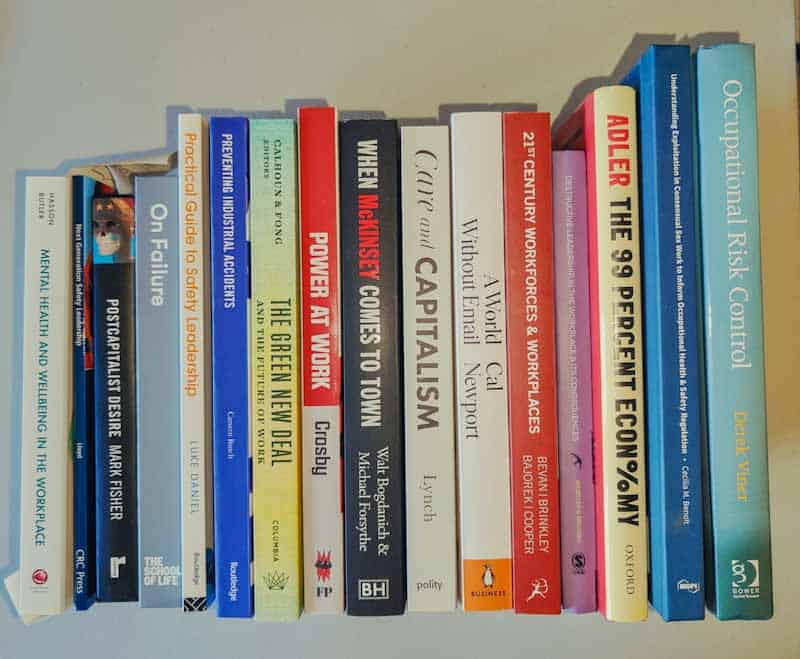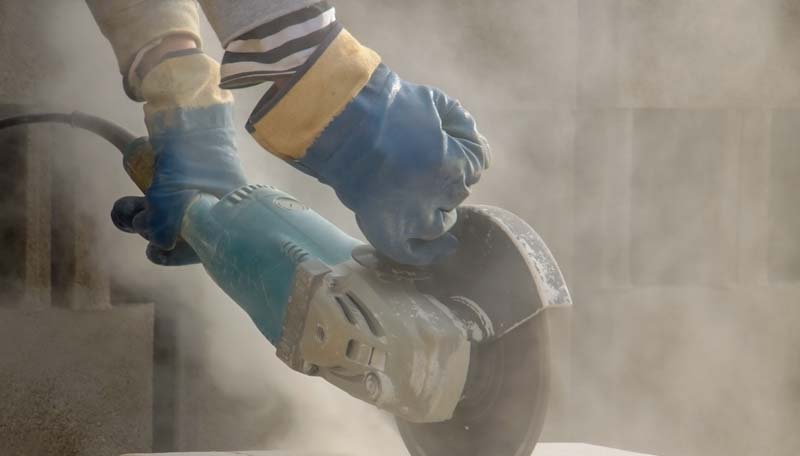All occupational health and safety (OHS) advocates should be reading the work of Jordan Barab. His latest article on “blaming the workers” for their own incidents is a great example of his writing. The article also illustrates one of the things about OHS that really gets up the noses of employers – if we don’t blame the workers, we have to blame the employers. An Australian answer to the situation would be Yeah, Nah.
Category: industrial relations
Unread books on safety and work
I always separate the books I have yet to read from those I have read, or else I lose track and can miss important books. Below is a list of those books in the hope that subscribers could tell me which they found to be useful and important if they have read any of them.
I have provided links to the books, usually publishers’ pages or reviews if you are interested, and check for special offers. Not all the books are new but new to me.

How could OHS have helped manage Chris Smith?
SkyNews and radio host, Chris Smith, has been dismissed due to inappropriate behaviour at a company Christmas party. This type of behaviour has been on the occupational health and safety (OHS) and Industrial Relations radar for a long, long time. Recently the psychological impacts of this type of behaviour have come to the fore, placing the issue clearly in the OHS realm.
It is useful to look at the Chris Smith saga through the “new” OHS perspective.
A fair dinkum fair go?
A New Work Relations Architecture is a radical book for Australia. Radical because its authors are proposing industrial relations reform, and Australia has had very little of this since Prime Minister John Howard‘s attempt with Workchoices in 2005. Radical also because it has taken inspiration from the Robens approach to occupational health and safety (OHS) laws.
The new “architecture” (thankfully, the cliche of “ecosystem” was not used) is described as:
Inspired by OHS but ignoring the shortcomings
A new Australian book has been structured around a “new work relations architecture“. Amazingly, a whole chapter is devoted to the role of occupational health and safety (OHS) in this new structure.
This chapter is written by prominent law academic Ron McCallum AO, offers a good summary of OHS laws and identifies the challenges to those laws in the near future, but its discussion is more reserved than it could be.
McCallum sticks to the suitability of the Robens model of OHS laws which McCallum describes as a type of “managed decentralism”. He highlights challenges to the laws and their operations that will be familiar to readers:
- climate change
- gig work
- working from home
HR, welcome to the OHS world and start getting used to it
In an article on burnout in The Sydney Morning Herald and The Age on December 10 2022 (paywalled), there was a peculiar quote and some paraphrasing of Sarah McCann, chief executive of the Australian Human Resources Institute (AHRI), indicating the size of the challenges facing human resources professionals in preventing psychosocial harm in Australian workplaces.
The article is a peculiar one. It states that burnout has been categorised as an occupational risk by the World Health Organisation but then reports on psychological support organisations who are applying the concept outside of work activities. The justification for this is that the work undertaken at home or in caring for a family is unpaid work but still work, so the occupational definition applies. That’s a stretch, but it’s possible.
When a ban is an understandable stunt
Australia has yet to offer a good reason for hazardous engineered stone products not being banned from import and use. On November 23 2022, Australia’s most influential construction union, the CFMEU, stated that it would ban these products from mid-2024 if the Federal Government does not. Trade unions no longer have the level of influence or numbers to achieve these sorts of bans. As with asbestos many years ago, such campaigns risk taking more credit for the potential occupational safety and health reforms than they deserve.






